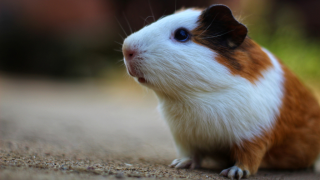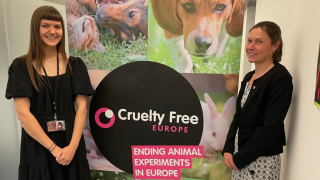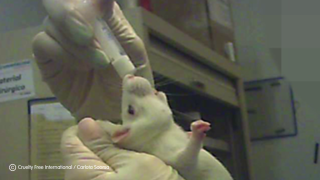Scientists at the Royal Veterinary College are breeding beagles with a devastating muscle-wasting disease to find a cure for the condition in humans
The Royal Veterinary College in Hertfordshire has recently bred a ‘colony’ of beagles with Duchenne muscular dystrophy (DMD) that they plan to use in experiments to test potential treatments. DMD is a rare inherited disease that affects around 2,500 boys in the UK. It is caused by a gene mutation that stops the body from producing dystrophin, an essential protein for building and maintaining strong muscles. Women are not affected by the disease but are carriers of the mutated gene. Symptoms include muscle weakness as well as difficulties with walking, swallowing and breathing. Patients with the disease usually die before the age of 30.
According to a journalist writing about the research in The Guardian this month, the affected dogs are visibly weak and were seen stumbling and struggling to walk.1 The dogs are currently being used in monitoring experiments where they are subjected to repeated brain scans, blood sampling and biopsies to study the progression of the disease. Eventually they will be injected with genes, stem cells or drugs with the aim of developing a cure for humans. All of the affected dogs are killed at around 18 months of age when the disease becomes so severe that they can no longer function properly. The unaffected females, who are used as healthy controls, are apparently rehomed at the end of the experiments.
The researchers have chosen to use dogs because they claim they are more similar to humans than mice. They claim that “if there is success in the dogs, there is a very good chance that the treatments will be successful in humans”.2 Unfortunately, the evidence suggests that this may be wishful thinking on their part. According to a recent review, results from DMD dog studies have so far failed to translate to patients because of unavoidable “physiologic differences between animals and humans”.3 For example, there are important differences in the way that the disease progresses in dogs vs. humans as well as the effect it has on specific tissues within the body.
Dr Nick Palmer, Director of Policy at Cruelty Free International, commented to Our Dogs magazine that: “Sadly, the history of animal experiments is full of examples of animal suffering which led nowhere, including in particular dog studies, simply because human physiology is too different. The deliberate breeding of animals to suffer in this way remains intensely controversial, and Cruelty Free International believes that the research funding would be far better spent on non-animal testing modelled on human physiology.”
Sources:
- Beagles bred with muscular dystrophy offer ‘hope of a human cure’. (2015). The Guardian, 14 November: http://www.theguardian.com/science/2015/nov/15/beagles-study-hope-cure-muscular-dystrophy
- Duchenne muscular dystrophy. Royal Veterinary College: https://www.rvc.ac.uk/research/about/animals-in-research/case-studies/duchenne-muscular-dystrophy
- Pharmacologic management of Duchenne muscular dystrophy: target identification and preclinical trials. (2014). ILAR Journal, 55(1): 119-149. Original article can be found here: http://www.ncbi.nlm.nih.gov/pmc/articles/PMC4158345/











